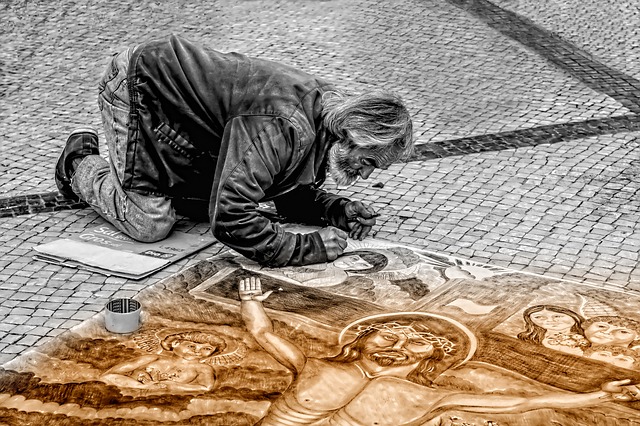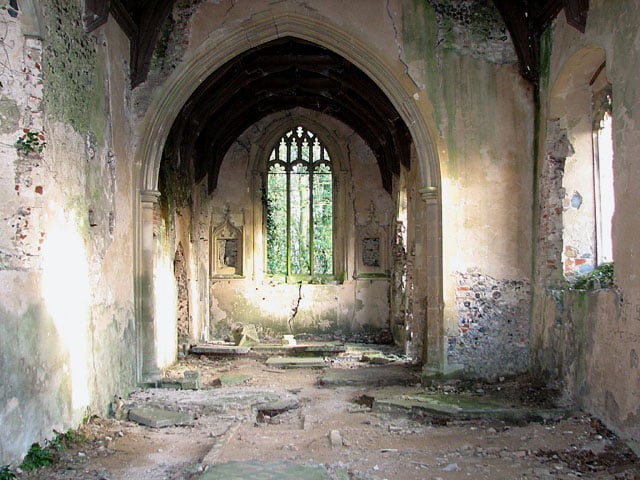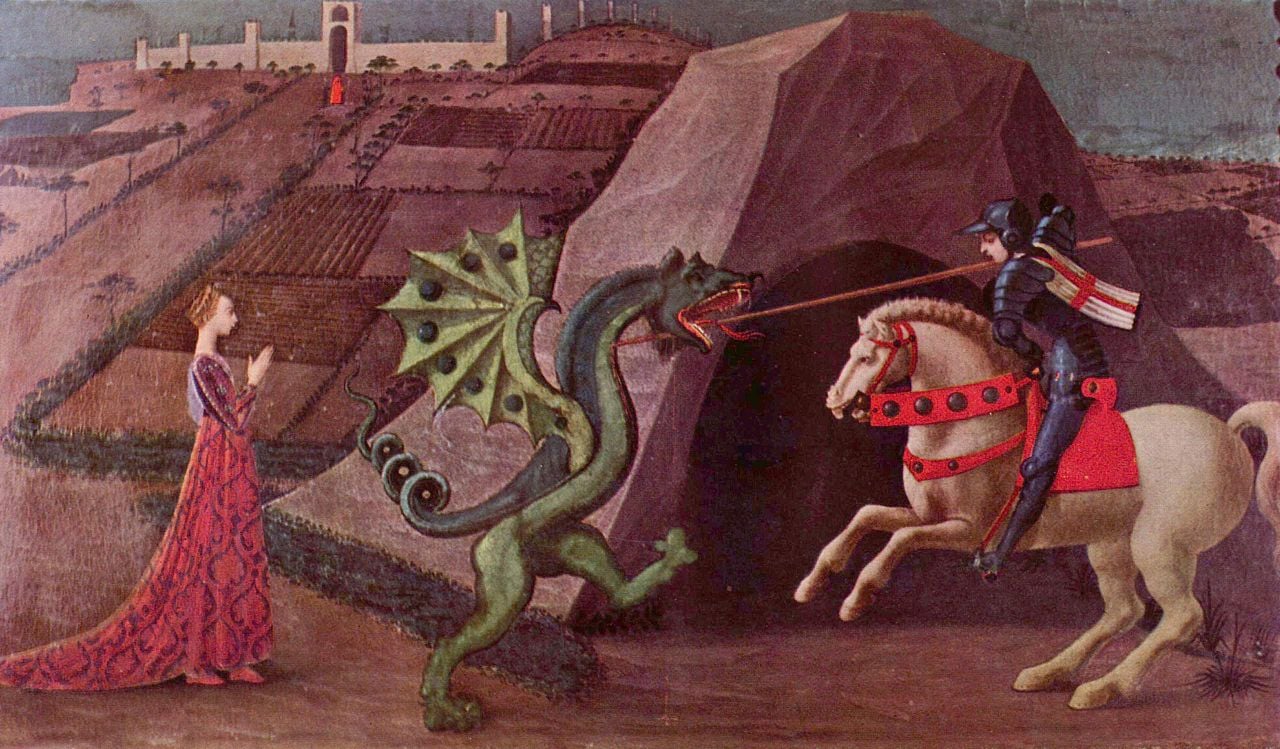Image courtesy of Pixabay
This morning I came across Saint Pope John Paul II’s “Letter to Artists,” an open letter written in 1999 to all artists of the world. An inspirational video summary was previously posted on Patheos, but the thoughts that John Paul II records in his letter are too good not to spend some time considering within the context of his Theology of the Body.
I would like to showcase a few essential parts of his message with the hope that you will be moved to read the rest in its entirety, attached here.
Just as he enters into his series of Wednesday catechesis that came to be known as the TOB, John Paul II begins his letter with the Genesis creation story. He first explains how the artistic creativity of man derives from his being made imago Dei:
God therefore called man into existence, committing to him the craftsman’s task. Through his ‘artistic creativity’ man appears more than ever ‘in the image of God’, and he accomplishes this task above all in shaping the wondrous ‘material’ of his own humanity and then exercising creative dominion over the universe which surrounds him. With loving regard, the divine Artist passes on to the human artist a spark of his own surpassing wisdom, calling him to share in his creative power.
Through the words of Genesis 1:31, John Paul II links both goodness and beauty with man’s very being. In one of his first Wednesday audiences, he teaches that the days of creation reach their culmination in the creation of man, when God looks at everything he had made and sees that “it was very good”:
For this reason it can be said with certainty that the first chapter of Genesis has established an unassailable point of reference and a solid basis for a metaphysic and also for an anthropology and an ethic, according to which ens et bonum convertuntur (being and the good are convertible). Undoubtedly, all this also has a significance for theology, and especially for the theology of the body.
Man in his essence, then, is good.In his letter, he links the good and the beautiful in order to deepen this understanding of man, specifically within the context of the artistic calling as “a vocation in the service of beauty.” On beauty, he says:
It was already present when I stressed God’s delighted gaze upon creation. In perceiving that all he had created was good, God saw that it was beautiful as well. The link between good and beautiful stirs fruitful reflection. In a certain sense, beauty is the visible form of the good, just as the good is the metaphysical condition of beauty. This was well understood by the Greeks who, by fusing the two concepts, coined a term which embraces both: kalokagathía, or beauty-goodness. On this point Plato writes: “The power of the Good has taken refuge in the nature of the Beautiful.”
In this way, we can say that man in his essence (as a unity of body and soul) is beautiful—not in the subjective ideals of beauty that fallen vision imposes upon things and people, but as a revelation of God. The artistic vision is the imaginative reinterpretation of this revelation, or sign, in light of the artist’s experience of reality:
Every genuine artistic intuition goes beyond what the senses perceive and, reaching beneath reality’s surface, strives to interpret its hidden mystery. The intuition itself springs from the depths of the human soul, where the desire to give meaning to one’s own life is joined by the fleeting vision of beauty and of the mysterious unity of things. All artists experience the unbridgeable gap which lies between the work of their hands, however successful it may be, and the dazzling perfection of the beauty glimpsed in the ardour of the creative moment: what they manage to express in their painting, their sculpting, their creating is no more than a glimmer of the splendour which flared for a moment before the eyes of their spirit.
The Church nurtures and appreciates art, he says, because “beyond its typically religious expressions, true art has a close affinity with the world of faith, so that, even in situations where culture and the Church are far apart, art remains a kind of bridge to religious experience.” Art gives tangibility to the yearnings of the soul for transcendence. To those who think Christianity should only look pretty, or feel soft, or taste sweet, or sound melodious, some of the most beautiful art will never appear as religious experience. Yet the most beautiful event in human history took the form of a disfigured face, a rough wooden cross, a taste of bitter gall, and the discordant jeers of a crowd. Christians should be scandalized by nothing, because:
In so far as it seeks the beautiful, fruit of an imagination which rises above the everyday, art is by its nature a kind of appeal to the mystery. Even when they explore the darkest depths of the soul or the most unsettling aspects of evil, artists give voice in a way to the universal desire for redemption.
Finally, in his appeal to artists, we can see the intimate relationship between art and the theology of the body:
Human beings, in a certain sense, are unknown to themselves. Jesus Christ not only reveals God, but “fully reveals man to man.” In Christ, God has reconciled the world to himself. All believers are called to bear witness to this; but it is up to you, men and women who have given your lives to art, to declare with all the wealth of your ingenuity that in Christ the world is redeemed: the human person is redeemed, the human body is redeemed, and the whole creation which, according to Saint Paul, “awaits impatiently the revelation of the children of God” (Rom 8:19), is redeemed. The creation awaits the revelation of the children of God also through art and in art. This is your task. Humanity in every age, and even today, looks to works of art to shed light upon its path and its destiny.
The purpose of both the Theology of the Body and art is not only to engage the Church in a new evangelization, but to teach man about his ultimate end; what God has prepared for us in accordance with our very nature.
In the words of C.S. Lewis,
“The promise of glory is the promise, almost incredible and only possible by the work of Christ, that some of us, that any of us who really chooses, shall actually survive that examination, shall find approval, shall please God. To please God…to be a real ingredient in the divine happiness…to be loved by God, not merely pitied, but delighted in as an artist delights in his work or a father in a son—it seems impossible, a weight or burden of glory which our thoughts can hardly sustain. But so it is.”













